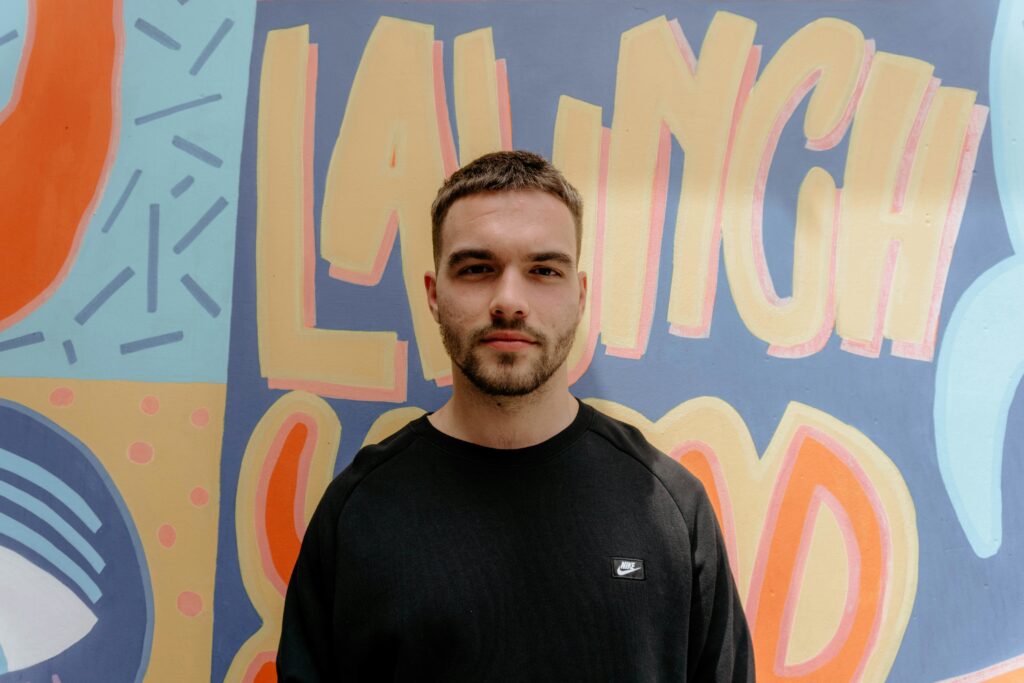What Is a 12 Step Program for Addiction?

The statistics surrounding drug and alcohol abuse in the United States are cause for concern. According to data from the National Center for Drug Abuse Statistics, close to 100,000 Americans die from drug overdoses each year. Opioids, a class of prescription drug used for pain management, account for close to 68% of drug overdose deaths. Alcohol use is also problematic. A 2021 survey from the Substance Abuse and Mental Health Services Administration found that nearly 30 million Americans over the age of 12 suffered from alcohol use disorder in the past year. Substance abuse affects everyone differently. Some may notice when casual drug or alcohol use turns into something more and take steps to curb their addiction issues. One of the most common ways people find help for addiction is through 12 step programs. These programs are peer-led and offer a safe space where anyone can share their experiences with recovery. Twelve-step programs can be valuable to the recovery process, but they don’t offer the same level of care a professional treatment center does. Footprints to Recovery’s full continuum of care for addiction and mental health disorders is rooted in compassion and dignity for all. We offer a variety of holistic and evidence-based treatment methods for an integrated approach to recovery. Our team of addiction professionals is dedicated to providing unparalleled support, guidance, and care to those in need. What Is a 12 Step Program? There are different avenues you can take for addiction recovery. The most advisable method is to get help from a professional substance use disorder treatment center. Another popular option is using peer support groups to aid in the recovery process. Twelve-step programs are peer-led groups that provide support and shared experiences. They have helped many people on their journeys to end serious addiction problems. According to research, those who attended 12 step groups following treatment fared better in their recovery journeys. As the name implies, many of these groups outline 12 traditions or steps you must take to complete the recovery process. After finishing the steps, your attitude toward substance abuse may have changed, allowing you to focus on sustained sobriety. Twelve-step program meetings provide members with safe spaces for sharing. You can also develop friendships and receive emotional support from your peers in recovery. The main difference between a recovery center and a 12 step program is that those who oversee peer-led programs may not be licensed and certified addiction treatment counselors. Seeking treatment from a professional facility means you receive comprehensive care overseen by treatment staff. These are people who are capable of providing medically assisted treatment and more. Peer-led groups are more focused on sharing experiences and finding common ground than providing integrated treatment. Popular 12 Step Programs Alcoholics Anonymous (AA) is the original 12 step group. The model proved effective in treating other addictions as well, which led to the formation of many different specific addiction 12 step groups. These recovery groups can be found all over the country. Some of the most popular 12 step groups include: Some groups get even more specific. While Narcotics Anonymous is a group for general drug use, there are specific groups that meet for some drugs. Those include substances like: The sense of community and support from others is often crucial in treatment as you can come to realize you aren’t alone on your journey to a brighter future. Research has shown that those who participate in 12 step groups have lower rates of substance use and fewer alcohol- or drug-related problems as a result. The study also found that people looking to overcome drug addictions using 12 step programs may have a more difficult time than those who seek help for alcoholism. What Is Alcoholics Anonymous? AA is a 12 step program offering support to people struggling with an alcohol use disorder (AUD). The program was first used by Bill Wilson and Dr. Bob Smith in 1935 in Akron, Ohio. The main premise of the group is that alcoholics are powerless in their fight against alcohol abuse. To reach lasting sobriety, you need to put your faith in a higher power and take a moral inventory of yourself. An AA meeting is a regular weekly event with a set time and location. Many who have completed formal alcohol dependence treatment find that attending 12 step meetings like AA aids in their ability to resist the urge to drink. There’s a motivational enhancement aspect to sharing recovery stories that can help you feel confident in your recovery journey. A volume known as “The Big Book,” first published by the group’s founders, provides a guideline for those looking for help with their drinking. The Big Book outlines the principles and philosophy of AA and presents a 12 step program for recovery from alcoholism. The 12 steps are a series of principles and actions individuals can follow to achieve sobriety and maintain their abstinence from alcohol. The Book also includes personal stories of people who have successfully recovered from alcoholism through the AA program. The twelve steps are the same for AA, NA, and other behavioral programs for addictions like gambling or sex. The 12 steps of Alcoholics Anonymous are: There is no set timeframe for how long AA takes. That process is different for everyone. AA is a self-help fellowship that provides ongoing support for people in recovery from alcohol addiction. Participants can engage with AA for as long as they find it helpful to their sobriety journeys. Factors such as the severity of your addiction, your desire to achieve sobriety, and your past history of recovery attempts can all affect how long you attend AA meetings. In some cases, people attend meetings for the rest of their lives to continue their goal of long-term sobriety. What Is Narcotics Anonymous? NA is an international, community-based organization that provides support and a structured program for those struggling with drug addiction. It follows a similar model to Alcoholics Anonymous but is tailored to address the needs
Trauma and Addiction: What’s the Connection?

Footprints to Recovery offers treatment for trauma and addiction that is rooted in compassion and dignity. Our clinical team can help you recover from co-occurring disorders and move on to a brighter future. Your experiences in life shape who you are. If those experiences are traumatic, they can lead to a serious mental health condition known as trauma. Living with trauma is a challenge, but thankfully there are treatment programs available to help with the healing process. What Is Trauma? Trauma is the term used to describe distressing or disturbing experiences or events that overwhelm a person\’s ability to cope. These situations leave lasting emotional, psychological, and sometimes physical effects long after they’re over. Traumatic events can be single incidents or ongoing situations that cause harm to someone’s mental and emotional well-being. Trauma is different for everyone. What one person finds traumatic may not be perceived the same way by someone else. Some examples of situations that cause trauma include: The list above features a few common examples. There are countless other situations and incidents in life that could cause trauma. What Are the Signs and Symptoms of Trauma? The symptoms of trauma can vary from person to person, depending on the nature of the traumatic experience and their individual coping mechanisms. Trauma can affect people emotionally, psychologically, and physically. Some common symptoms of trauma include: What Are the Different Types of Trauma? When discussing trauma, the condition is divided into three distinct categories: Acute Trauma Acute trauma refers to a sudden and intense event or experience that poses a threat. This type of trauma is often unexpected. You may feel overwhelmed and unable to cope with the situation. Acute trauma can result from various incidents, such as: Chronic Trauma Chronic trauma refers to repeated exposure to traumatic events or stressful situations. These occur over an extended period of time. Unlike acute trauma, which is characterized by a single intense incident, chronic trauma involves ongoing stressors that can be interpersonal, environmental, or systemic. Examples of prolonged situations that can cause chronic trauma include domestic violence and military service. Complex Trauma Complex trauma is a psychological condition that results from experiencing prolonged and repetitive traumatic events. It’s also known as complex post-traumatic stress disorder (C-PTSD). It often occurs during childhood or early developmental stages of life. It is a more severe and chronic form of trauma compared to single-incident traumas or acute traumas. Complex trauma often occurs in interpersonal relationships, where you are subjected to ongoing abuse, neglect, or abandonment. Trauma and the Brain Trauma can have a significant impact on the brain. It can affect the brain’s structure, function, and neurochemical balance. When you experience a traumatic event, your brain responds in order to cope. In cases of severe or prolonged trauma, these responses can lead to changes in the brain. Trauma can affect the following parts of the brain: Amygdala: The amygdala is a part of the brain responsible for processing emotions. These include fear and threat detection. During traumatic experiences, the amygdala becomes hyperactive, leading to heightened emotional responses and being especially aware of potential dangers. This can mean you get triggered by reminders of the trauma. Hippocampus: The hippocampus plays a crucial role in forming memories and consolidating them. Trauma impairs the hippocampus, leading to difficulties in processing and integrating memories of the traumatic event. This can result in fragmented or intrusive memories, contributing to symptoms like flashbacks and nightmares. Prefrontal Cortex: The prefrontal cortex is involved in decision-making, impulse control, and emotional regulation. Trauma can affect the prefrontal cortex\’s function, leading to difficulties in managing emotions and making sound judgments. This can contribute to impulsive behaviors and emotional dysregulation. Neurochemical Imbalance: Trauma can disrupt the balance of neurotransmitters in the brain, such as serotonin and dopamine. These are crucial for mood regulation and pleasure, and an imbalance can contribute to symptoms of depression, anxiety, and other mood disorders. Effects of Childhood Trauma Childhood trauma can have long-lasting effects on your development, emotional well-being, and physical health. Adverse childhood experiences such as child abuse, neglect, and parental loss can lead to a range of trauma symptoms in adulthood. According to the Substance Abuse and Mental Health Services Administration, 2 out of 3 children experience a traumatic incident by the time they reach 16 years old. Childhood trauma has been linked to many adverse effects including: The Connection Between Trauma and Addiction There is ample evidence that mental health disorders like trauma play a role in developing and continuing substance abuse. In turn, substance abuse can make the symptoms of trauma more severe. This cycle of co-occurring disorders can be a nightmare to escape from. The cycle begins when someone experiences a form of abuse or trauma. After experiencing this kind of stressor, they may turn to drugs and alcohol as a way to cope with their emotions and negative thoughts. Substance abuse serves as a temporary escape from their problems, but it creates a new issue in the process. Can Trauma Cause Addiction? Trauma can be a significant factor in developing a substance use disorder. When someone experiences trauma, it can have a lasting impact on their emotional health. Trauma can lead to mental health issues such as anxiety, depression, and emotional pain. Some trauma survivors may attempt to reduce these feelings through substance use to self-medicate or escape distressing emotions. It is important to note that trauma does not necessarily cause addiction. There are cases where someone experiences trauma and does not develop a substance use disorder as a result. The reverse is also true. While addiction can make symptoms of trauma worse, those who abuse substances may not necessarily have experienced trauma in their lives. While it’s not fully accurate to say that addiction causes trauma or trauma causes addiction, the relationship between the two cannot be ignored. Both are complex mental and behavioral health issues that can make each other worse if left untreated. Finding reliable mental health and substance abuse treatment is
Opiate vs Opioid: What’s the Difference?

If you\’re familiar with the current opioid epidemic in the United States you have most likely heard the words opiate and opioid. Have you been asking yourself what is an opioid vs opioid? More than 8 million people abused prescription pain medication in the past 12 months. That number has led many people to call the abuse of these medications a public health crisis. While intended to treat pain, these medicines also carry a high risk of misuse. The long-term health implications of prescription medication abuse is also troubling. It can be difficult to watch someone fall victim to pain medication addiction. It can be even more difficult to get them help. What confuses many is the large number of names used to describe these medications. They are often referred to by their manufacturer names, like Percocet or Vicodin, but they can also be called by their generic names, like hydrocodone or fentanyl. You may have also heard them called opiates or also opioids. That leads many to wonder if there’s a difference between an opiate vs opioid. There is a difference, and understanding the difference between opiates and opioids can help you guide a loved one towards the right path to recovery. There is a high risk for opiate and opioid overdose, so getting help right away is important. What Is an Opiate (vs and Opioid)? An opiate is an addictive drug derived from the poppy plant. These drugs include: These drugs are considered natural because they come from a poppy that grows in nature, and some are used for medical purposes. Heroin’s class of drugs, however, is a Schedule I narcotic. That means it has no medical value and it’s highly addictive. Opiates cause feelings of pleasure and relaxation. These drugs are very powerful and affect the brain on a chemical level. This is due to the release of endorphins in the brain when an opiate is introduced to the body. When these feelings go away, it can lead to uncontrollable cravings, impulsive usage, and abuse. Opiates carry a high risk of overdose and death, particularly when abused over a long period of time. What Is an Opioid? Advancements in medical science over the years led to the creation of opioids. They function in a similar way to opiates but are, at least in part, synthetic. That means they are created in labs to mimic the effects of natural opiates. There are more than 500 synthetic opioids with a wide range of uses. For instance, some are used in cough medication to reduce discomfort. Others are prescribed following surgery and accidents to help patients feel less pain. Others, like methadone, are actually used to treat pain medication addictions. Opioid drugs are often prescribed by doctors as pain medicines, but, like opiates, opioids cause feelings of euphoria and pleasure. Over time, users can build up a tolerance so higher doses are needed to feel the same high. That makes their urges to use the drugs worse. When abused, opioids can have serious consequences and have troubling drug overdose death rates. If you are addicted to opioids, it’s important to find help as soon as possible. If left untreated, the risk for overdose or even death will only grow. Opiate vs Opioid: Is Either Safe to Use?
What Is Residential Rehab Like?

Residential rehab is an intensive treatment where individuals stay in a facility for 24 hours a day. It typically lasts 21 days to several months. As the most intensive form of substance abuse treatment, residential rehab is most successful in helping those with severe or long-term addictions. Facilities typically offer group counseling, individual counseling, case management support, family therapy, and other treatment plans. What Is Rehab Like: A Typical Day in Inpatient Treatment The first week of addiction treatment in a residential facility like Footprints to Recovery usually consists of a detox period. This ensures drugs and/or alcohol are out of your system so you can enter treatment no longer influenced by their effects. Detox can often be difficult or dangerous. At a treatment center, professional addiction treatment counselors oversee medical detox so you have support and care throughout the process. These experts help manage withdrawal symptoms, watch your vital signs, offer emotional support, and administer medication. How intense detox is and how long it lasts depends on factors like what substances you abused and for how long. Co-occurring mental health disorders can also affect the severity and duration of withdrawal symptoms. The staff at Footprints to Recovery focus on establishing a safe place for controlling cravings and managing withdrawal symptoms. After medical detox, inpatient rehab is very structured and filled with activities and therapies. This eliminates boredom and downtime, which may tempt you to relapse. Planning the day distracts you from cravings and teaches you how to live differently. Each program varies, but a typical day usually looks like the following: You’ll rise early and have a healthy breakfast. Some facilities offer morning programs such as yoga and meditation. These help you form new healthy habits that can be continued outside of treatment. Afternoons are reserved for therapy sessions. An individual therapy session might include cognitive behavioral therapy (CBT). CBT is one of the most effective methods in substance abuse treatment. According to the National Institute on Drug Abuse (NIDA), it has been effective during treatment and after people leave a facility. This therapy teaches you to anticipate problems and enhance self-control through effective coping strategies. Other forms of therapy may include: In the evenings you’ll have opportunities to engage socially and be a part of sober recreation, like: Or you might choose to read, journal, pray, or meditate. Group Therapy Group therapy is an important and highly effective treatment for addiction issues. It involves mediator-led meetings with others who share your desire to get sober. Meetings are safe and supportive settings where everyone collaborates on how to handle addiction and the issues in life that come with it. Group therapy can help you develop better communication skills and allow you to see that you aren’t the only one who struggles with drugs or alcohol. A sense of community support creates a place where you can feel open and vulnerable as you work towards sobriety. Case Management In residential addiction treatment you’ll be assigned a case manager. Your case manager is part of your system of support during your time at a recovery facility. They’ll also be there for you in the future when you feel like you need help to prevent a relapse or negative decision making. Your meetings may entail creating a treatment plan, connecting you to a provider, and keeping track of your progress. Medication Assisted Treatment Medication, such as methadone, can help treat addictions. The medications should only be used under the supervision of an addiction treatment professional. When taken in a supervised setting, medications can: It is important to understand that these medications do not cure addiction. They are most-effective in addiction recovery when used alongside counseling and other forms of behavioral therapy. 12-Step Model Support/Recovery Groups The 12-step model offers a free, peer-based treatment program for those with drug use disorders. Participants adhere to a set of instructions to refrain from using their preferred substances. Each step is a guiding principle that helps someone avoid triggers, cope with stress, and stay sober even when life gets difficult. The 12-step model involves regular group meetings, which help create a sense of safety, inclusion, and community among attendees. Examples of 12-step recovery groups include: These types of programs are often used during aftercare following residential rehab. Aftercare is an ongoing form of addiction treatment for those who have completed their inpatient and/or outpatient treatment programs. Aftercare offers support and care post-rehab so you can remain on a path to sober living. Pros and Cons of Residential Addiction Treatment It is important to take the pros and cons of residential addiction treatment into consideration before you commit to a level of care. There are benefits and drawbacks to this treatment path, and it may not be the correct process for everyone. Here are some important pros and cons to consider when deciding if residential treatment is right for you. Pros of residential rehab include: • 24-hour medical and emotional support• Medical support during withdrawal symptoms• None of the distractions or temptations of everyday life• Flexible program lengths• Structured programming• Nutritional support• Forming new healthy habits• Sense of community• Establishing healthy boundaries Cons of residential rehab include: • More expensive• Disruptive to everyday life• Limited access to social circle support All the items listed in the pros section are important reasons why you should consider residential rehab over a 12-step program or trying to quit alcohol or drugs at home. The outstanding level of care provided; access to skills development; and the opportunity to turn your life around in a distraction-free, safe environment should be reasons to consider getting help from a professional recovery program. Trying to get sober on your own can be difficult, frustrating, and ineffective. For many, attending occasional meetings isn’t enough to get a grip on their addiction problems. Residential rehab is the more effective treatment for those in search of a sober future. What Are Other Types of Rehab Like? Residential rehab is just one type of addiction treatment offered by
Does Alcohol Cause Memory Loss?

If you’ve been abusing alcohol regularly and you’re feeling more forgetful, foggy, or confused, it’s probably not a coincidence. Alcohol abuse is linked to both temporary and permanent memory loss. Temporary memory loss is most likely after heavy drinking or binge drinking. This type of memory loss is usually not serious and may resolve on its own. But if you’re a heavy drinker or binge drink frequently, you’re at risk for long-term problems with memory. These problems may reverse with treatment, but in some cases, they can lead to permanent brain damage. Alcohol and Memory Loss: Temporary or Permanent Depending on your drinking patterns, alcohol can lead to short-term and long-term memory loss. Here are some ways alcohol and memory loss are linked: Short-Term Memory Loss from Alcohol Short-term effects of memory loss are most likely to occur when you’re intoxicated. You may have trouble remembering details of what you did while drinking. This can happen to social drinkers and people with alcohol addictions. Some research finds that people who have been drinking are more likely to forget words they have just learned. The research also indicates that people who are intoxicated are more likely to forget information they have just heard. This research did not directly compare the memory of people who had been drinking with the memory of people who had not been drinking. It’s possible that other factors, like sleep deprivation or stress, could affect memory problems in these studies. Long-Term Memory Loss from Alcohol Alcoholism and memory loss are linked. Permanent memory loss is more likely to happen if you drink heavily over a long period of time. Heavy drinkers are at risk for developing dementia, which is a condition that leads to a permanent decline in cognitive function. Heavy drinkers are more likely to experience issues with memory and thinking than light drinkers or non-drinkers. One study found that people who drank heavily were more likely to develop dementia later in life. Another study found that heavy drinkers were more likely to perform worse on tests of memory and executive function. Wernicke-Korsakoff Syndrome Wernicke-Korsakoff syndrome is a type of alcohol-related brain damage (ARBD) that can result from chronic alcohol abuse. Korsakoff syndrome used to be considered two separate conditions. Now it\’s generally considered one disorder with two different phases. Wernicke’s encephalopathy usually happens first, followed by Korsakoff\’s psychosis. Wernicke-Korsakoff syndrome can be reversed if it’s treated early. If it’s not treated, it can lead to permanent damage. Why Does Alcohol Cause Memory Loss? Alcohol addiction may cause memory loss by affecting the way memories are stored in your brain. For instance: Do Any Drugs Cause Memory Loss? In addition to alcohol, there are other substances that can cause memory loss. These include: Reversing Memory Loss from Alcohol: Is It Possible? There is some evidence to suggest that brain-related alcohol effects may be reversible. One study found that people who stopped drinking were more likely to experience improvements in memory and thinking than those who kept drinking. However, it’s important to keep in mind that not all studies have found such improvements. It’s possible that some of the damage caused by alcohol is permanent. Researchers are learning how to help people who have experienced memory loss recover brain function. Future event simulation (FES) is a memory technique that uses strategies like making linked and indexed lists. FES appears promising in aiding long-term recall for people with events that happened recently or for recurring events happening in the near future. According to other National Institutes of Health studies, eliminating alcohol over several months to a year may result in brain structure changes that can help the condition. Abstinence can also aid in reversing cognitive deficits like: In some cases, it may be possible to reverse memory loss. For example, if memory loss is caused by a vitamin B12 deficiency, treatment with vitamin B12 supplements can improve memory. If memory loss is caused by medications, changing or stopping the medication could improve memory. In other cases, such as dementia, memory loss may not be reversible. Signs You Have Memory Loss from Alcohol There are several signs that you may have memory loss from using alcohol. These include: Alcohol and Memory Loss: Risks There are a few risks associated with memory loss from alcohol. These include: Treatment for Memory Loss from Alcohol Alcohol abuse can damage your memory permanently, but there are treatment options available for people with memory loss from alcohol. These include: How Do You Treat Wernicke-Korsakoff Syndrome? Thiamine is a vitamin that is essential for proper brain function. A deficiency of thiamine can lead to Wernicke-Korsakoff syndrome. Supplementing with thiamine can help to improve symptoms and reduce the risk of further damage to the brain. Thiamine supplements are typically taken by mouth, but they may also be given intravenously (IV) in some cases. There is no cure for Wernicke-Korsakoff syndrome, but treatment can help improve symptoms and reduce the risk of further brain damage. Treatment typically includes a combination of: In some cases, hospitalization may be necessary to ensure thiamine supplements are taken properly and to monitor for complications. Abstaining from alcohol is an important part of treatment for Wernicke-Korsakoff syndrome. Alcohol consumption can make symptoms worse and cause further damage to the brain. Memantine, which is commonly used to treat Alzheimer’s disease, may also be effective in treating other types of dementia brought on by heavy alcohol consumption. Alcohol Addiction Treatment The best way to prevent cognitive impairments from alcohol is to quit drinking. When you’ve become dependent on alcohol, you’ll likely need to attend a professional alcohol addiction treatment program to get sober and stay sober. Alcohol rehab helps you safely detox from alcohol and then address the reasons why you drink, so you’re less likely use alcohol to cope in the future. Alcohol addiction treatment may include: Get Help for Alcohol Abuse, and Protect Your Memory The effects of alcohol can cause long-term damage to your body and your brain health. Don’t
Detoxing While Pregnant: Is It Possible?

Stigma and shame keep some pregnant women from entering an addiction treatment program. Please know that getting help for drug or alcohol addiction is courageous and can help you and your child live a healthy, fulfilling life. If you’re pregnant and struggling with substance abuse, getting treatment is the best move you can make for you and your unborn baby. In a treatment setting, medical professionals trained to safely detox expecting mothers can help you begin your recovery the best way possible. Is Detox Safe for Pregnant Women? When medically supervised, alcohol detox and drug detox for pregnant women can be effective and safe. Never attempt to quit using drugs and alcohol cold turkey on your own. This puts you and your baby at risk for dangerous and sometimes deadly consequences. Detoxing while pregnant is typically safer for your baby than the withdrawal symptoms they’ll have once they’re born if you continue to use alcohol and drugs. There is only one type of safe detox for pregnant women, and that is medical detox overseen by physicians. What is Medical Detox Like for Pregnant Women? Clinicians have set specific protocols for detoxing pregnant women that health organizations like The Substance Abuse and Mental Health Services Administration (SAMHSA) recommend. Only medical professionals can implement these protocols safely and effectively. #1 Medical Examination Detox from any type of substance abuse when you’re pregnant can be risky for both you and your unborn child. A thorough medical exam is necessary to understand your physical health and the benefits and risks of detox drugs that ease withdrawal symptoms. Alcohol detox and sedative/hypnotic drug detoxes can be deadly if you have a physical dependency on these substances. Your physician can determine the best medical interventions to keep you and your baby safe during detox based on your individual situation. #2 Management of Withdrawal Symptoms There are special considerations for managing withdrawal symptoms in pregnant women with alcohol and drug addictions. For instance, sometimes medications are prescribed to help discomfort that can accompany drug or alcohol withdrawal. A physician knows: #3 Prenatal Care If you’re pregnant, medical detox and addiction treatment should always include obstetrical care. Regular obstetric exams can prevent potential problems and are important for monitoring your baby’s growth and development. Some addiction treatment centers have team members that provide this specialized care at the addiction rehab center, while others will connect you with outside providers during your time with them. #4 Addiction Education Keeping you and your baby safe from the effects of drugs and alcohol doesn’t end with a detox program. Without treatment, you won’t develop an understanding of why you use substances or the healthy coping skills you need to stay sober. Your detox team can help you choose an addiction treatment program that fits your needs and connect you with services that keep you and your baby healthy. Substance Abuse Treatment for Pregnant Women The real work of recovery takes place in addiction treatment. There are reasons why you’re abusing drugs and alcohol, and those reasons don’t go away after you eliminate substances from your body. You may have been using substances to self-soothe past trauma, co-occurring mental health disorders, or other emotional pain. Alcohol and drug use has become a way to cope and it has also changed your brain’s reward system, making it very difficult to quit without professional help. A dual diagnosis treatment center helps you address the mental, physical, and emotional aspects of addiction simultaneously. Substance use disorder treatment may include components like: If you’re pregnant and using drugs or alcohol, there is help available. Get the treatment you need to make a better life for you and your family. References
Insurance Stepping Up Telehealth Options

Addiction specialists, insurance companies, and state and federal governments have battled back and forth over how to handle telehealth options. In 2019, 42 states plus the District of Columbia had laws in place regarding commercial insurance and telehealth. It was a step in the right direction though the requirements were widely varied. However, the insurance reimbursements rates varied from state to state if they were even reimbursing at all. This made using telehealth options to their fullest potential impossible. Then in 2020, COVID-19 hit the United States, and the country began shutting down. Stay-at-home orders brought to light the need for telehealth insurance coverage. Coronavirus Changing Insurance and Telehealth Coverage March 6, 2020, a Public Health Emergency was declared, allowing addiction specialists and other medical professionals to use telehealth. The order also requires insurance companies to reimburse for all telehealth appointments. The following changes to telehealth and insurance are in place for the duration of the public emergency. Payment for Telehealth Services Under the emergency orders, physicians can use forms of telehealth to replace in-office and hospital visits. Insurance companies are to treat these services the same as in-office visits and reimburse as such. This order replaces the previous restrictions in place for telehealth. Cost-Sharing Some insurance companies are offering flexible cost-sharing options during COVID-19. Medicare Advantage has waived all out-of-pocket expenses for treatment. Establishing Patient Relationship Requirements When the President signed the COVID spending bill, it included language that says a person must have an established relationship with the doctor. Medicare and other insurance companies are allowing these relationships to be established via telehealth. Virtual Check-ins Insurance companies have a fee schedule to provide payment for check-ins. Check-ins are quick communications to decide if an in-office visit is necessary. Some insurances, including Medicare, are allowing check-ins via telephones, audio-video devices, secure text messages, email, and patient portals. Patients that do not feel comfortable with these methods can still choose in-office visits. Telehealth Visits Telehealth visits are the new normal during the pandemic. Virtual visits can replace visits that do not require hands-on medical intervention. The coverage of telehealth visits also include visits for mental health and addiction treatment services. HIPAA HHS also announced they would be using discretion and waiving penalties for HIPAA violations. This only applies if the provider is acting in good faith and only during the pandemic. Changing the Future of Tele-Services and Insurance Reimbursement COVID-19 and shelter-in-place orders have everyone logging on to video services to feel connected to friends and family. These video services are also changing the future of healthcare. With the risk of COVID-19 spreading, the use of telehealth services is exploding. Tele-services have been used for many years in healthcare. Insurance reimbursement was always an issue when healthcare professionals billed for the services. Insurance reimbursement issues kept many healthcare professionals from using teleservices. The pandemic is making insurance look harder at the benefits of telehealth, telemedicine, and tele-treatment. Telehealth Telehealth has become increasingly popular due to the rising costs in healthcare and insurance. Life is hectic, and spending hours waiting at the doctor’s office doesn’t fit into daily schedules. Pre-Coronavirus, some healthcare facilities, and insurance companies had some form of telehealth services and coverage. Mainly behavioral and mental health professionals used telehealth. Coronavirus forced everyone to stay home, and telehealth became the new normal for doctor visits. With insurance, healthcare professionals, and the government working together, telehealth is our future. Coronavirus has brought to light the time and financial savings that telehealth offers to physicians, patients, and insurance companies. Many large companies are offering telehealth insurance plans that are cost-friendly. These companies are seeing many benefits, such as: Telemedicine Telemedicine refers to clinical healthcare services offered through telehealth methods. Telemedicine was never used to its fullest benefit, pre-coronavirus. The services being conducted included follow-up visits, treating chronic conditions, specialty consults, and medication management. When Coronavirus arrived in America, telemedicine became the only safe way to receive medical care. Doctors and medical professionals quickly increased their telemedicine capabilities despite the assurance of payment from insurance companies. Insurance companies with extreme urging from the government have improved their reimbursement policies for telemedicine. With the visible benefits of telemedicine, insurance companies are working closely with medical professionals and software companies to improve telehealth. With HIPPA relaxing enforcement during the pandemic, they will eventually go back to enforcing the laws. Building the technology to protect the HIPAA laws while providing excellent telemedicine care is at the forefront of everyone’s minds. Telehealth and Online Rehab: The Future of Fighting Addiction Online Rehab involves getting any help through an internet-enabled device. Addiction treatment centers have increased their telehealth capabilities and expanded their online rehab programs. Stay-at-home orders have caused 12-step programs to move to video-conferenced meetings. There are many options that online rehab offers that in-person rehab does not. Privacy is enhanced dramatically by seeking treatment online. Addiction can cause a lot of embarrassment for an individual, and the chance of being exposed prevents some from seeking help. Seeking help through online rehab allows an individual to control who knows about their addiction. Inpatient treatment requires a person to leave their home and job for a period of time. And outpatient treatment exposes a person to be seen entering and exiting treatment centers. Online rehab is not for everyone but has been successful in beating the disease of addiction. Flexible scheduling is a great advantage to online rehab. Depending on the program, a person can fit rehab into their busy life instead of fitting their busy life into rehab. Scheduling rehab around available childcare is a massive benefit for a lot of mothers fighting addiction. Travel time to and from treatment and meetings can eat up a big chunk of time, especially high traffic areas. Seeking treatment online from home can save time and money versus in-person treatment. Access to treatment is the number one advantage of online rehab. It can be difficult for people in small towns and rural areas to access rehab and addiction
Telehealth Online Resources: Helpful Links for Those in Recovery

During this uncertain time, Footprints to Recovery is here to help you stay on the right path. Your continued sobriety is of the utmost importance to us. For this reason, our team is offering several telehealth online options for individuals in recovery. Alumni Support Meeting Hosted by Robi Styer with an Alumni guest speaker When: Every Wednesday 8pm EST/ 7pm CST/ 6pm MDT Zoom Meeting ID: 545 213 437 Family Support Meeting Hosted by Melissa Townes When: Every Thursday 8pm EST / 7pm CST/ 6pm MDT Zoom Meeting ID: 272 007 331 Password: 045259 COVID Chronicles Hosted by Nick Kratzer When: Every Friday 12pm EST / 11am CST/ 10am MDT Zoom Meeting ID: 615 802 3037 Password: 045957 Other Helpful Telehealth Recovery Meetings Available Alcoholics Anonymous aa-intergroup.org/directory.php onlinegroupaa.org aaonlinemeeting.net Narcotics Anonymous virtual-na.org na.org/meetingsearch SMART Recovery smartrecovery.org
Rebutting the 5 Most Heard Excuses for Not Getting Treatment

Asking for help can often be a difficult task for a lot of people. For someone struggling in their addiction, it can almost be easier to justify why they “shouldn’t get treatment”. Many professionals can attest to hearing their fair share of reasons from clients, but they all have one thing in common. They are all excuses that people come up with when they are having difficulty accepting the severity of their use and the impact it has had on their lives. Rarely do people come into treatment with a smile on their face and a happy go lucky attitude. More often than not, people come with a wave of emotions, including anger, frustration, guilt and shame. It is important to emphasize that though people may come in with these emotions, it outweighs the cost of not seeking help when it is needed. Here are some of the most common excuses that professionals hear from clients as to why they shouldn’t seek treatment: 1. Financials. It is important to emphasize that the cost of attending treatment heavily outweighs the risk of not attending. Take a moment to think about the cost of obtaining your drug of choice and then add all the other incidentals that come with it, such as lost paychecks from a job, lawyers, etc. The cost of maintaining an addiction is tremendous. There are always ways to make treatment more affordable and programs that will be willing to work with you. Think of it as an investment into a better future. 2. Timing. There is never a “perfect time” to do anything in life, just like there is never a perfect time to go seek treatment. There will always be obstacles, events happening and things to do. Ask yourself this question, would you rather be in treatment now and have the rest of your life a head of you or would you rather your addiction control your life and never get to fully live it. Be present in the now and take control of your own life. Don’t let your addiction do it for you, because here’s a secret, it does not have your best interests in mind. Use the time you have now before it’s gone. The only thing unforgiving in this life is time. It will keep moving forward with or without you. 3. I can do it on my own. Addiction is a disease that is meant to manipulate someone into thinking they are invincible and smart enough to beat it. If someone you love was diagnosed with a fatal disease, would you agree that they shouldn’t get treatment because they believe don’t need help and can do it themselves? Probably not. Denial is a key symptom of addiction that can cause someone’s reality to be skewed. Do not be afraid to ask for help or admit that you can’t do it yourself. It is one of the strongest and bravest things someone can do. 4. Jobs. Most people use this excuse as “I need to work to make money” or “Ill lose my job if I don’t go in”. Legally, there are laws in place to help protect employment while in treatment. In addition, treatment centers will often help their clients find jobs to support their goals. If you continue to use this excuse while in active addiction, chances are that you may end up losing your job from use anyway. Your health and wellness should always be the priority. There will always be another job, but there will not always be opportunities to save yourself from a deadly disease like addiction. 5. Family and loved ones. Many people use their family, including spouses and children, as reasons why they should not seek treatment. This can be valid at times. However, if you are in active addiction, think about what this is doing to your family and loved ones. If someone is constantly coming home intoxicated or high, think about what this looks like to a child or a spouse. Are you really being the best you can be for your family if you are active in addiction? Chances are family and loved ones WANT you to get the help you need so that you can be there for them. Family members can even get involved in treatment for further support. They would rather see you in treatment working on yourself than lose you to your addiction. Taking the steps to seek treatment, for some people, can be the factor between life and death. Addiction can be a fatal disease that has already taken the lives of too many. Denial can be the toughest part in initiating that first step into treatment. On the outside looking in, it can be easy to identify the problem and understand when someone needs help. For the addict, it may not always be that simple. That is why it is important for family and friends, along with professionals, to be supports and help individuals work through their excuses and reasons not to seek help. There are no negatives to getting treatment for addiction. Don’t let denial or the barriers your addiction makes for you be the excuse for not seeking help. Remember to Find Your Reason to seek treatment and turn someday into today. Author: Lauren Tropiano, MA, LAC, NCC – Footprints to Recovery – Clinical Therapist
Cost of Not Attending Addiction Treatment

The first step of asking for help is often, but not always, the most difficult step to take. Feelings of guilt and shame amongst other negative emotions continue to fuel the behaviors associated with the misuse of substances, in conjunction with ongoing active use. It’s during these times that continuing down the destructive path of addiction may seem like the easier option; however, it is important to remember and be aware of the negative impacts that choosing to not receive care could have on your life. Let’s take a moment to examine some of these elements: Family Concerns: Relationships are often strained when a loved one is struggling with active addiction. Family members may choose to distance themselves or discontinue communication as a result of stress and anxiety levels being heightened as they fear for the well being of their loved one. Choosing to engage in care for your addiction is the beginning to repairing these strained relationships. Treatment offers a platform to better understand yourself, the dynamics of your family and/or other interpersonal relationships, and how to better manage yourself and communicate. In the absence of engaging in treatment, these family concerns will only continue to worsen and become increasingly difficult to mend as time goes on. Emotional Concerns: The misuse of substances often leads to increased symptoms of, most commonly, depression and anxiety. The co-occurrence of substance use and mental health disorders is highly prevalent. During active use, medications prescribed for mental health concerns may be taken inconsistently or completely forgotten. The re-emergence of psychiatric symptoms can increase the chance of ongoing substance use due to individuals attempting to manage their symptoms through the use of substances. In the absence of treatment, unmanaged mental health symptoms can continue to worsen and potentially result in the need for stabilization in a hospital or inpatient setting. In extreme cases, individuals may experience psychosis or thoughts to harm themselves or others. Medical Concerns: The potential for medical complications as a result of substance use can be significant. If engaging in the practice of sharing needles occurs as a part of your substance use, this increases the possibility of contracting HIV/AIDS, or Hepatitis C. Some individuals may wind up with an infection at the injection site which would require medical attention. There is also risk associated with detoxification from alcohol or benzodiazepines, as unmanaged withdrawal can result in seizures. Engaging in a medical detox will allow you to detox from substances comfortably and safely with the oversight of a full medical team, reducing the risk of complications. The largest concern with regards to health is the probability of overdose and death. Treatment is the best option to reduce the risk of any medical complications associated with addiction. Financial Concerns: Active use of alcohol or illicit substances can have major implications on financial stability. There is a risk of bills being unpaid, increase in debt, damaging your personal credit history, defaulting on a mortgage or car loan, and/or even losing everything. Sometimes the need for money to continue the use of drugs can lead to dangerous behaviors, for example; burglary or prostitution. Legal Concerns: Individuals that engage in the continued use of alcohol or drugs run the risk of arrest. Whether it is a possession charge, driving under the influence, or a theft/burlglary related charge; the implications and consequences are significant. Incarceration, fines, probation, etc. are all possible results of arrest. Choosing to receive care for your substance use disorder mitigates all the identified risks mentioned above. There is NO negatives to engaging in treatment. While it can be difficult and emotionally challenging to venture down the road of recovery, the possibilities of happiness and a positive quality of life are endless. Find the reason, and remember you are worth it. Author: Caitlin Simpson DSW, LCSW, LCADC – Footprints to Recovery – Director of Clinical Operations





